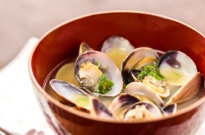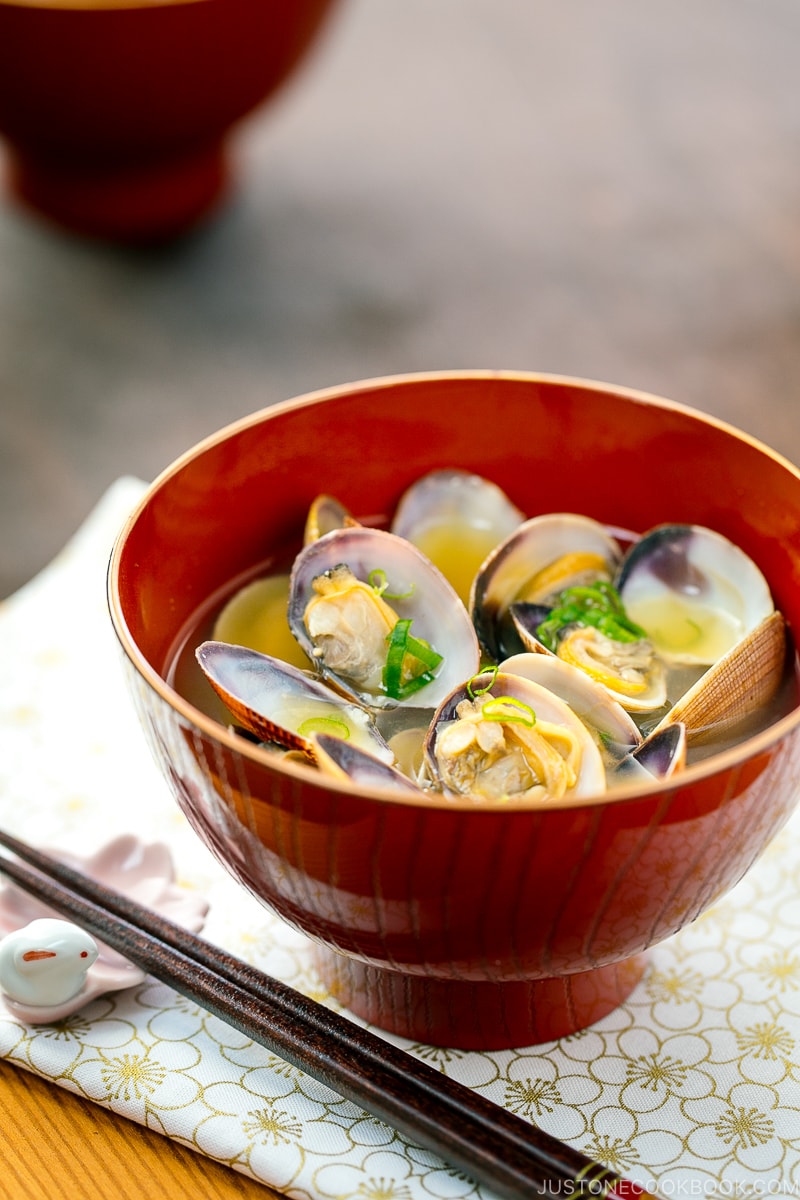
Did you know there are hundreds of varieties of Japanese miso soup? You’re probably familiar with tofu and wakame seaweed as the mainstream ingredients. Another popular choice in Japan is Japanese Clam Miso Soup (あさりの味噌汁), and it’s one of my favorites!
It’s typically made with asari or Manila clams, but you can use different kinds of clams for this recipe. Read on and I’ll show you how to prepare the fresh clams for this easy and delicate soup.
What is Japanese Clam Miso Soup?
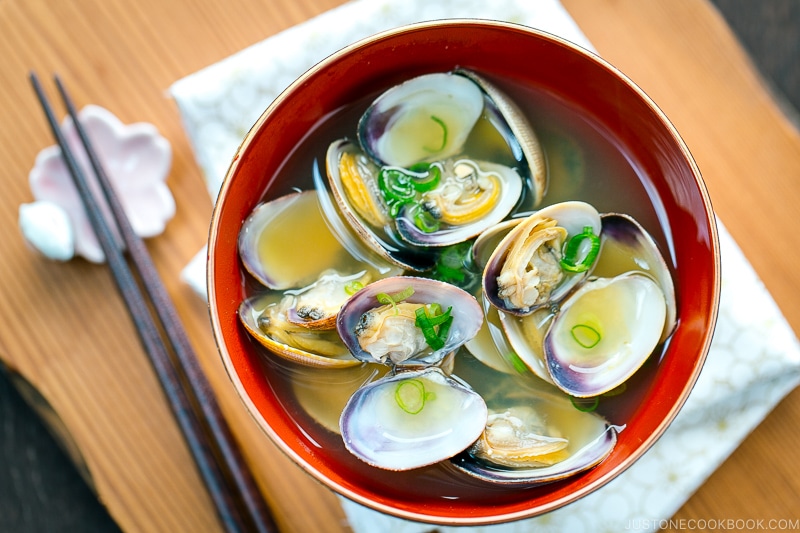
Japanese clam miso soup or asari no miso shiru (あさりの味噌汁) is a dish enjoyed in households and restaurants throughout Japan. As the name suggests, asari or Manila clam is the classic variety for traditional Japanese clam miso soup. You can use different types of clams in this recipe, too. Just be sure to use good quality, fresh clams.
It’s important to use clams as the only ingredient in the soup. That means no tofu or wakame seaweed. You do not want to mix the delicate clam taste with flavors from other ingredients.
Here, I use Kombu Dashi, a Japanese soup stock made from dried kelp. It has a light and clean umami flavor that pairs beautifully with the delicate clam stock. This is a departure from the standard Awase Dashi with katsuobushi (shaved bonito flakes) and kombu that I use for classic miso soup.
Why You’ll Love This Recipe
- flavorful and delicious
- so easy to make!
- a fancier version of the ordinary miso soup
- additional protein and nutrition
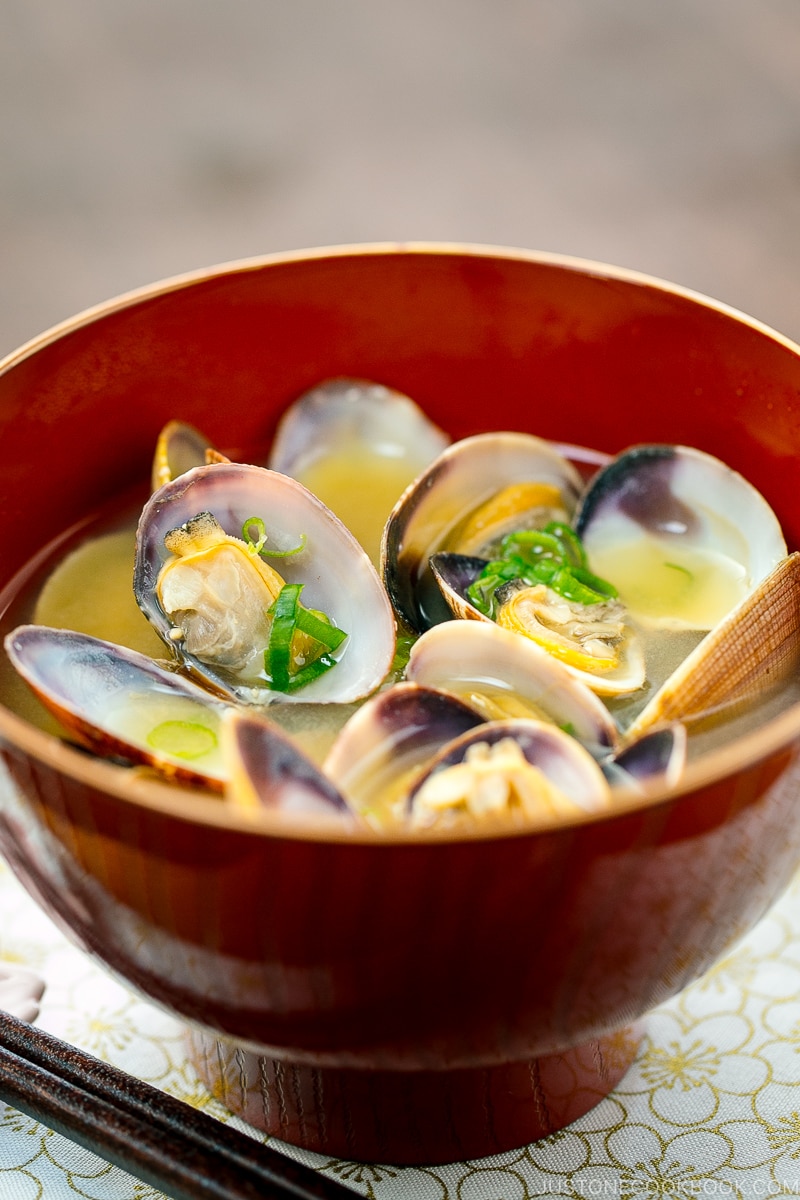
Ingredients You’ll Need
- Manila clams – called asari in Japanese; feel free to use other types of fresh, good-quality clams
- kombu (dried kelp)
- water
- miso (Japanese fermented soybean paste) – I use koji miso or awase miso, but you can use any type of miso you have
- scallions/green onions – chopped; for garnish to round out the dish beautifully.
If you prefer a clear broth without miso, try my Japanese clear clam soup called Ushiojiru.
Jump to RecipeHow to De-Grit and Clean Clams
It’s important to de-grit and clean the clams before cooking them. No one wants to taste or feel sand in their food.
You can find various articles on the Internet on how to de-grit clams, and they will probably work. In the US, popular methods include using cornmeal to get the sand out. Clams ingest the cornmeal, then purge out the sand and grit.
In Japan, however, fishermen and housewives all use saltwater; it’s how I de-grit and clean clams, too. If you are interested in the Japanese way, here’s a quick overview; see my tutorial on how to clean clams for detailed instructions and step-by-step photos.
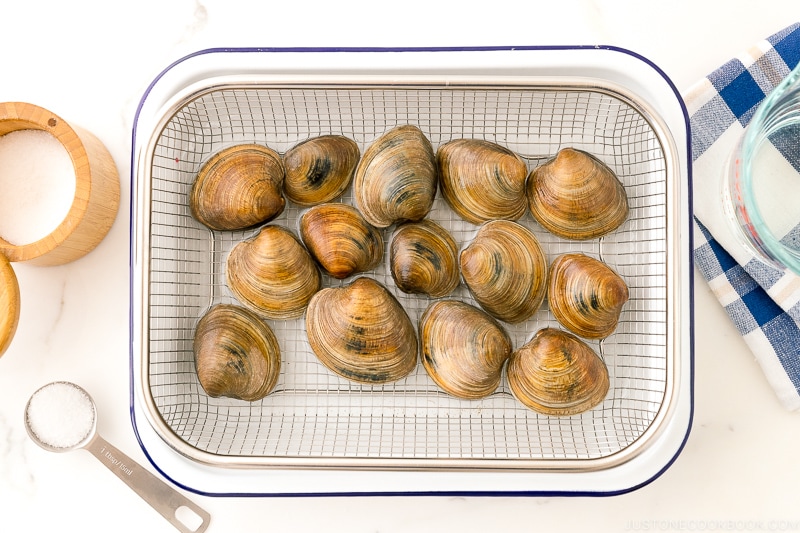
- Make the saltwater with cold water and a generous amount of salt. The salt concentration of seawater is about 3%, and you want to make your saltwater close to that.
- Tap the clams with open shells to make sure they close to check if they are alive. Then, place the clams in a wire rack or sieve set in a tray or pan so the purged sand falls to the bottom of the pan.
- Pour in the saltwater up to the level of the clams’s mouths. Do not fully submerge in the soaking water.
- Soak for 1 hour to let the clams purge their sand and grit.
- Scrub the clamshells with a brush under cold running water to clean them. Now, they’re ready to use!
How To Make Japanese Clam Miso Soup
- De-grit and clean the clams to purge them of sand using water and Diamond Crystal kosher salt. Start this process 1 hour before cooking.
- Add the clams, water, and kombu to a medium pot. Bring it to a boil over medium heat, then reduce to medium-low heat.
- Skim the scum and foam from the broth using a fine-mesh strainer.
- Turn off the heat immediately when all the clam shells open up. Do not overcook it.
- Dissolve the miso in a ladle filled with hot broth, then stir it into the soup.
- Serve in individual soup bowls. Sprinkle chopped green onions/scallions on top.
I hope you will give this easy miso clam soup a try! It’s a real treat to enjoy fresh clams this way.
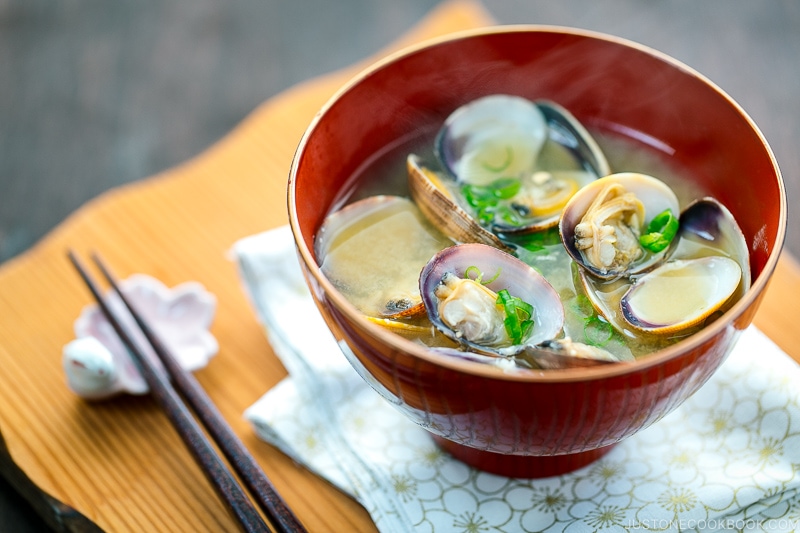
Other Soup Recipes You’ll Love
- Ushiojiru – Japanese clam soup with clear broth
- Sanpeijiru – Hokkaido-style salted salmon soup
- Harusame Soup – Japanese glass noodle soup
- Kenchinjiru – vegan Japanese vegetable soup with clear broth
- Miso Soup with Yuzu Kosho (Japanese citrus chili paste)
Wish to learn more about Japanese cooking? Sign up for our free newsletter to receive cooking tips & recipe updates! And stay in touch with me on Facebook, Pinterest, YouTube, and Instagram.
Japanese Clam Miso Soup
Ingredients
- ½ lb Manila clams (As soon as you purchase the clams, you must purge them of sand and clean them following my How to De-Grit the Clams tutoral. Start this process 1 hour prior to cooking.)
- 2 cups water
- 1 piece kombu (dried kelp) (0.2 oz, 5 g; 2 x 2 inches, 5 x 5 cm per piece)
- 2 Tbsp miso (I use koji miso or awase miso)
- 1 green onion/scallion (finely chopped)
Instructions
To Prepare the Clam Miso Soup
- In a medium pot, put the clean ½ lb Manila clams, 2 cups water, and 1 piece kombu (dried kelp) and bring it to a boil over medium heat.
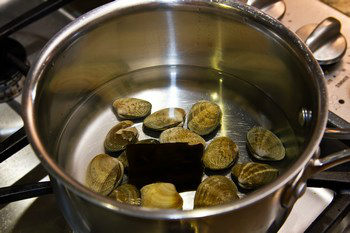
- Once boiling, reduce the heat to medium low.
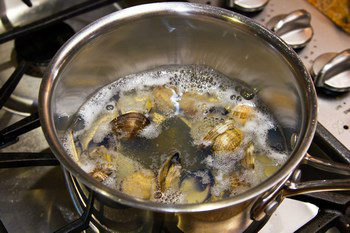
- Skim off the scum using a fine-mesh skimmer. Tip: Prepare a cup/bowl of water and dip the skimmer in the water to clean.

- When all the clams open up, turn off the heat immediately and do not overcook it. Remove and discard the kombu.
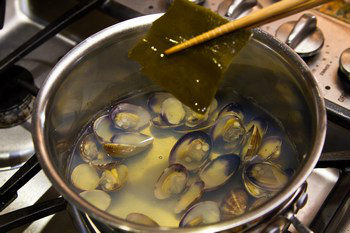
- Use a ladle and dissolve 2 Tbsp miso. Each brand of miso has different saltiness, so adjust the taste of the soup by adding more water or miso (add a small amount at a time).
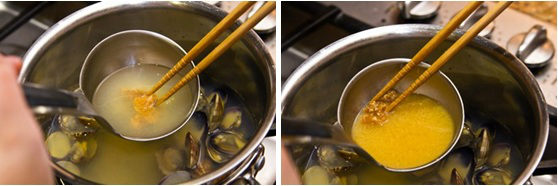
- Serve the Clam Miso Soup in individual soup bowls. Sprinkle with 1 green onion/scallion (chopped). When you need to reheat the soup, make sure you DO NOT BOIL the miso soup because it will lose its flavor.

To Store
- You can keep the leftovers in an airtight container or in the pot and store in the refrigerator for 24 hours.
Nutrition
Did you make this recipe?
Tag @justonecookbook on Instagram so we can see your delicious creation!



